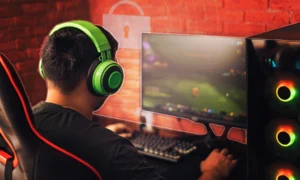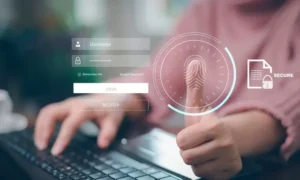Are textbooks and classrooms becoming a thing of the past? It seems that way, as educational technology sweeps through our education system like wildfire. From virtual reality to AI-powered personalized learning, the future of education is being reshaped right before our eyes. Join us on this thrilling journey as we explore how educational technology is revolutionizing learning and paving the way for an entirely new era in education. Get ready to be amazed by the possibilities that lie ahead!
Introduction to Educational Technology
Education has always been considered as the foundation for personal and societal development. With advancements in technology, education has also evolved to meet the needs of a rapidly changing world. In today’s digital age, educational technology, or edtech is playing a crucial role in revolutionizing learning and shaping the future of education.
What is Educational Technology?
Educational technology, also known as edtech, refers to the use of technology in education to enhance and improve the learning experience for both students and educators. It encompasses various forms of technology such as electronic devices, educational software, online platforms, and digital tools.
The main goal of educational technology is to improve teaching and learning processes by making them more effective, engaging, and accessible. It enables educators to provide personalized instruction based on a student’s individual needs and allows students to learn at their own pace. This integration of technology in education has revolutionized traditional teaching methods and opened up new possibilities for learning.
One of the key features of educational technology is its ability to break down geographical barriers. With online learning platforms and virtual classrooms, students no longer have to be physically present in a classroom to receive quality education. This has greatly benefited students living in remote areas or with limited access to educational resources.
Moreover, educational technology makes learning interactive and engaging through multimedia content and simulations that can cater to different learning styles. This enables students with visual, auditory or kinesthetic preferences or special needs like dyslexia or ADHD to learn effectively through interactive elements.
Another major aspect of educational technology is data analytics. Through various digital tools used within the classroom or online platforms, student progress can be tracked easily allowing teachers to identify areas where a student may need additional support. Data analytics also help teachers evaluate their teaching methods so they can make adjustments accordingly.
Apart from traditional subjects like math and science, educational technology has expanded into vocational training as well. Virtual training programs have enabled individuals to gain practical skills from the comfort of their homes which has significantly increased accessibility for learners looking for technical skill development opportunities.
Advantages of Using Educational Technology in Learning
The use of educational technology in learning has become increasingly popular over the past decade. From online courses to virtual reality simulations, technology has revolutionized the way we learn and acquire knowledge. In this section, we will explore the various advantages of integrating educational technology into traditional learning methods.
1. Personalization and Flexibility: One of the greatest advantages of educational technology is its ability to personalize learning experiences for students. With the help of AI algorithms, educational tools can adapt to each student’s unique learning style, pace, and needs. This allows students to learn at their own pace and in a way that suits them best. Technology also provides flexibility as students can access resources and complete assignments from anywhere at any time, making it easier for working professionals or students with busy schedules.
2. Enhanced Engagement: Educational technology offers more interactive and engaging ways for students to absorb information compared to traditional teaching methods. The use of multimedia elements such as videos, animations, games, etc., not only makes learning more enjoyable but also helps improve retention rates by stimulating different senses and catering to visual or auditory learners.
3. Access to Up-to-date Information: Technology allows for quick updates and instant access to the latest information related to a particular subject or topic. With digital textbooks and online databases, students no longer have to rely on outdated course materials or wait until their next class for new information.
4. Cost Savings: Incorporating educational technology in schools can result in significant cost savings both for institutions and students/parents by reducing expenses associated with print materials, transportation costs (for those attending classes remotely), physical infrastructure upkeep costs (e.g., computer labs), etc.
5.Tailored Learning Experiences: Educational technology enables teachers/instructors to create personalized lesson plans tailored specifically for individual student needs; thus improving overall academic performance while using less time-consuming approaches such as creating customized worksheets or handouts.
6.Collaboration Opportunities: Technology promotes collaboration among students, enabling them to work together on projects regardless of their location. This enhances communication and teamwork skills while also providing exposure to different perspectives.
Examples of Education Tools and Programs
The use of educational tools and programs has become increasingly prevalent in today’s classrooms, as educators seek to enhance the learning experience for their students. These tools and programs range from traditional methods such as textbooks and worksheets to more advanced technologies like online courses and virtual reality simulations. The following are some examples of the education tools and programs that are shaping the future of education.
1. Online Learning Platforms: With the rapid growth of technology, online learning platforms have become a popular tool for both teachers and students. They provide access to a variety of educational materials, interactive exercises, and assessments that can be accessed anytime, anywhere with an internet connection. These platforms also offer personalized learning experiences by allowing students to progress at their own pace.
2. Gamification: Gamification is the integration of game elements into non-game settings, such as education. It has been proven to increase student engagement by making learning more fun and interactive. For example, language learning apps often use gamification techniques, such as reward systems or challenges, to make the process more engaging and enjoyable for learners.
3. Virtual Reality (VR): VR technology is quickly gaining popularity in the education sector due to its ability to create immersive learning experiences. This technology allows students to explore different environments without leaving the classroom; they can travel back in time or visit faraway places through virtual field trips. It also provides hands-on experiences for subjects such as science where experiments can be simulated in a safe environment.
4 . Augmented Reality (AR): Similar to VR, AR adds digital elements into real-world environments. It enables teachers to bring static concepts like diagrams or models to life by overlaying 3D images on top of them through a device’s camera lens or via wearable glasses.
5 . Adaptive Learning Software: Adaptive learning software uses data analytics algorithms combined with artificial intelligence (AI) technology to tailor lessons based on individual student needs; it adapts according to each student’s performance, pace, and preferences. This individualized approach encourages self-directed learning and helps students reach their full potential.
6 . Digital Textbooks: Instead of static textbooks, many schools are now adopting digital textbooks that provide interactive features such as video clips, animations, quizzes, and online collaboration tools. These resources can be regularly updated with new information and provide students with a more dynamic learning experience.
Impact of Educational Technology on Students and Teachers
Over the past decade, there has been a significant increase in the use of educational technology in classrooms. This technology includes various digital tools such as computers, tablets, interactive whiteboards, and educational software that are integrated into lesson plans and curriculum. As with any new development, there has been much debate about the impact of educational technology on students and teachers. In this section, we will explore how these advancements have revolutionized learning for both parties.
One of the most noticeable impacts of educational technology on students is its ability to enhance their engagement and motivation levels. Traditional teaching methods can sometimes be monotonous for students, leading to disinterest and distractions. With the integration of technology in lessons, educators can now engage students using interactive elements such as videos, games, quizzes and more. This not only makes learning fun but also encourages active participation from all students regardless of their learning style.
Moreover, educational technology has increased access to information and resources for students. No longer limited by textbooks or library materials, they can now find a wealth of knowledge at their fingertips through online databases and search engines. This promotes independent learning skills as well as critical thinking abilities since they must assess which sources are reliable and relevant.
For teachers, educational technology has also had a profound impact on lesson planning and delivery. Technology offers an array of tools that allow them to create dynamic presentations tailored to their student’s needs while saving time on creating traditional visual aids like charts or graphs manually. Additionally, it streamlines administrative tasks such as grading assessments or tracking student progress through online platforms specifically designed for educators.
Furthermore, technological innovations have made communication between teachers and students more efficient. Platforms like Google Classroom or Edmodo allow direct messaging between teachers and their class group for assignments submission or individual feedback – making it easier for both parties to stay connected outside the classroom environment.
Challenges and Concerns Surrounding Educational Technology
As with any emerging field, educational technology comes with its own set of challenges and concerns. While there is no doubt that it has the potential to revolutionize learning and improve access to education for individuals all over the world, there are also several issues that need to be addressed in order for it to reach its full potential.
One of the main challenges surrounding educational technology is the digital divide. This refers to the gap between those who have access to technology and those who do not. In many parts of the world, especially in developing countries, internet access and technological resources are limited or non-existent. This creates a significant barrier for students and educators who want to integrate technology into their learning experience. Without equal access, there is a risk of further widening the educational gap between privileged and underprivileged students.
Another concern related to educational technology is privacy and security. As more data is collected from students through online platforms and tools such as learning management systems, there is a growing concern about how this information will be used and protected. With data breaches becoming more common, it is important for institutions using educational technology to have strong safeguards in place to protect sensitive student information.
Additionally, another worry surrounding educational technology is the potential decrease in face-to-face interactions between teachers and students. While online learning can offer convenience and flexibility, it also eliminates the traditional classroom setting where personal connections between students and educators can be fostered. This may impact social skills development among students as well as hinder opportunities for direct feedback from teachers.
Moreover, there are concerns about the quality of online education compared to traditional classroom instruction. It takes special skills for educators to effectively teach through virtual means, which requires training that not all teachers may have received yet. There is also ongoing debate about whether online learning can provide an equally effective hands-on experience as traditional classes for subjects such as science or arts.
Cost remains a major hurdle for widespread adoption of educational technology. While advancements in technology have made it more affordable, there are still significant expenses involved in implementing and maintaining the necessary infrastructure and training teachers. This can be a major roadblock for schools and institutions with limited budgets.
The Future of Education with Continued Technological Advancements
In recent years, technological advancements have drastically changed the landscape of education. From online learning platforms to virtual reality classrooms, educational technology has made a significant impact on how we learn and teach. And as technology continues to advance at a rapid pace, it is shaping the future of education in ways we never thought possible.
One of the most significant changes brought about by technology in education is the shift towards personalized learning. With adaptive learning software and artificial intelligence, students can now receive customized lessons tailored to their individual needs and learning styles. This allows for a more efficient use of time and resources as students no longer have to spend extra hours on topics they have already mastered.
Furthermore, traditional classroom models are being challenged by distance learning platforms and virtual classrooms. Students are no longer limited by geographical boundaries or time constraints when it comes to accessing high-quality education. Whether it be through Massive Open Online Courses (MOOCs) or live online classes, technology has made it possible for anyone with internet access to learn from top institutions around the world.
Collaboration and communication also play vital roles in modern-day education thanks to technological advancements. With tools like video conferencing software and collaborative online platforms, students can easily connect with others from different backgrounds and cultures to work together on projects and exchange ideas. This not only enhances their understanding of various subjects but also promotes cultural diversity and global citizenship.
Another aspect that will see immense growth with continued technological advancements is the integration of gamification into education. Gamified learning has proven to be effective in engaging students’ attention spans while making abstract concepts more tangible through interactive games and simulations. As technology advances, there will be even more opportunities for educators to incorporate game-based elements into their curriculum.
However, with all these developments comes the pressing need for teachers to adapt their skills accordingly. In addition to subject knowledge, educators must also possess digital literacy skills and continuously update themselves on emerging technologies relevant to teaching methods. Professional development programs and partnerships between schools and technology companies can aid in bridging this gap.
Conclusion
In conclusion, technological advancements have been drastically changing the landscape of education and continue to usher in new ways of learning. From personalized learning experiences to increased accessibility and engagement, educational technology is revolutionizing the way we acquire knowledge. As we move towards a more digital future, it is essential for educators and students alike to embrace these changes and use them as tools for growth. With collaboration between technology and traditional teaching methods, education can become even more effective in preparing our youth for a successful future. It is an exciting time for the world of education, and I believe that with continued innovation and adaptability, we will see even greater strides being made in the years to come.



































